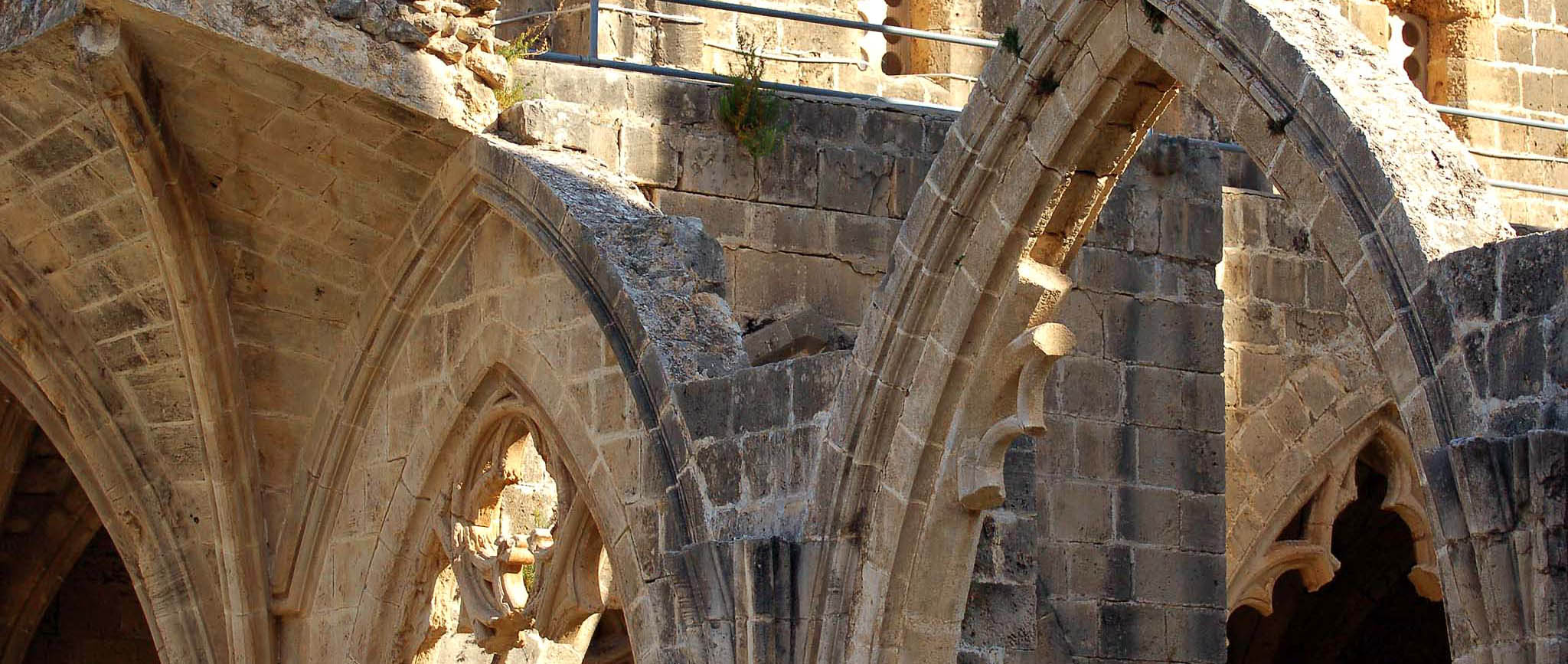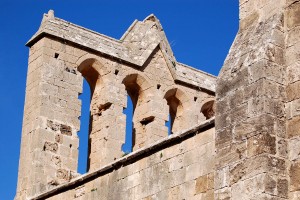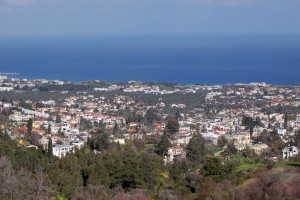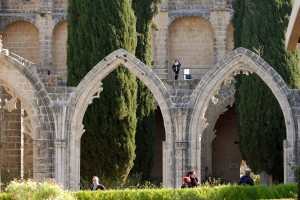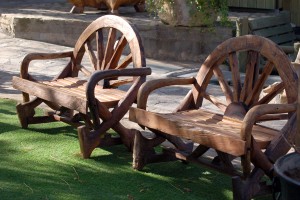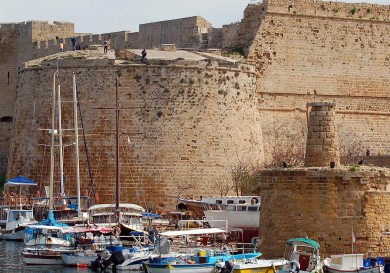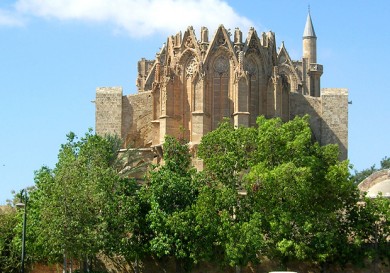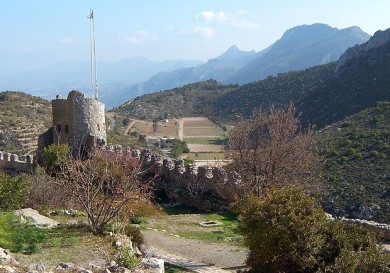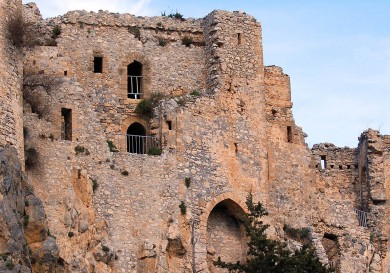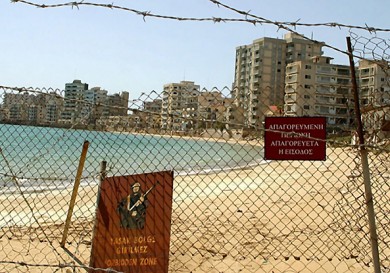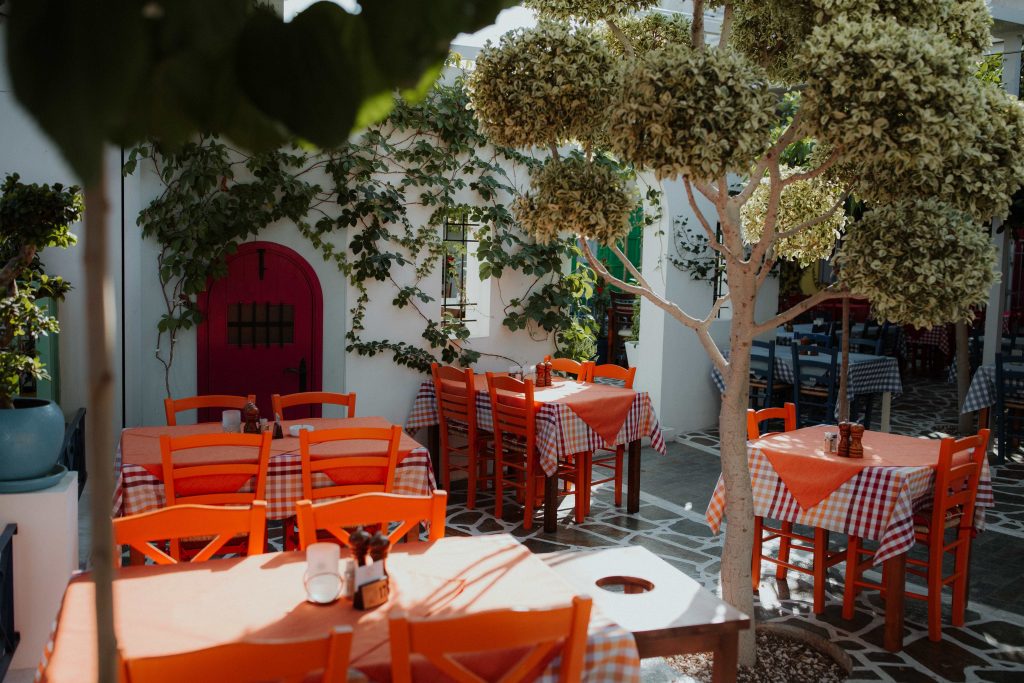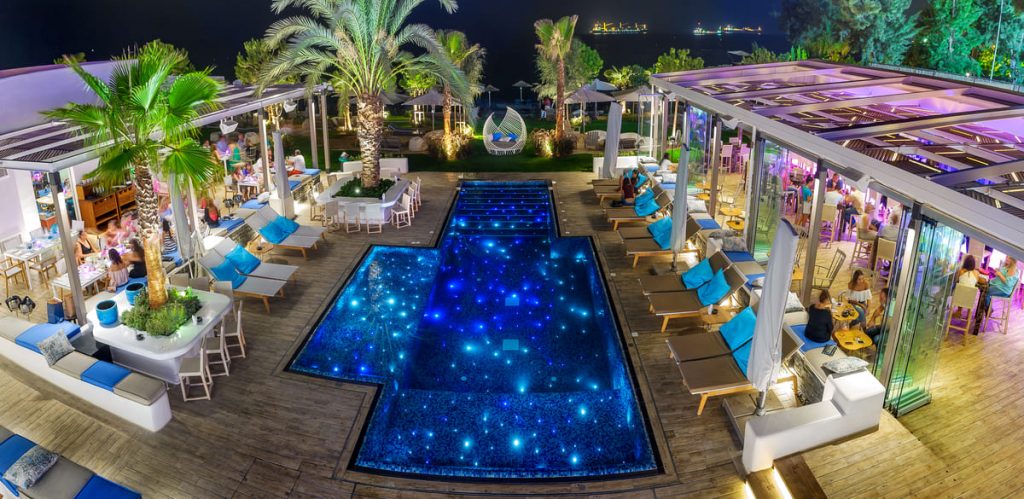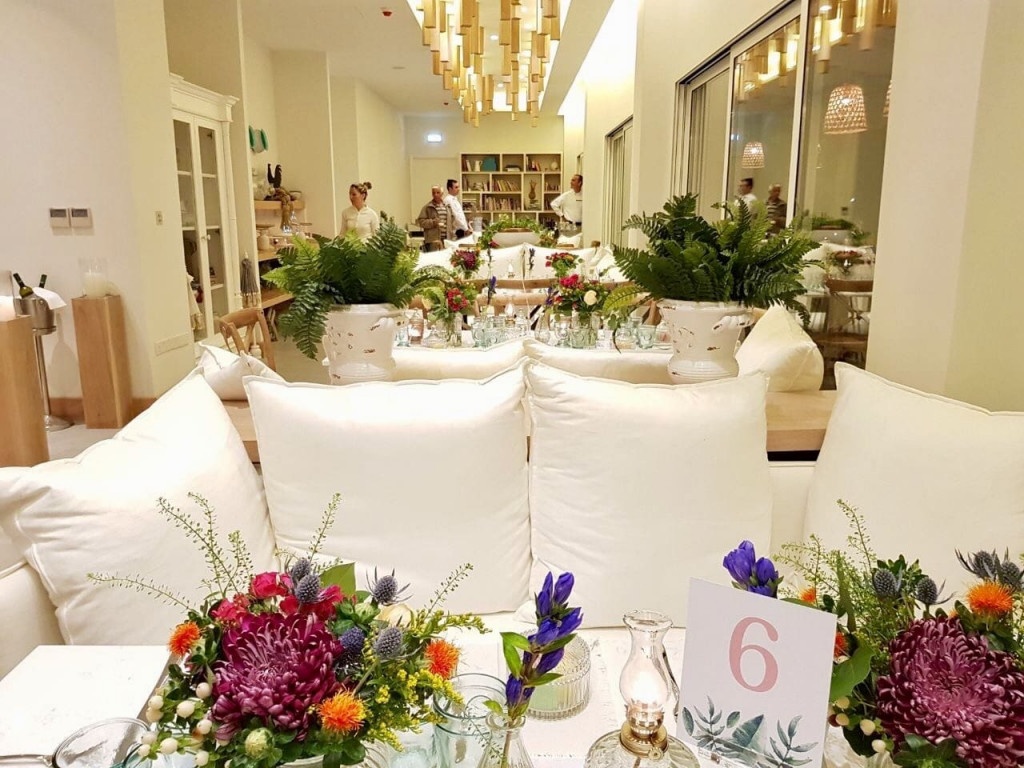The Bellapais Abbey is one of the main sights in the northern part of Cyprus
The Bellapais Abbey is one of the perfect pearls adorning the northern part оf the island. It is to this mesmerizing place that we went one February weekend. Unfortunately, we failed to enjoy the beauty of the place fully because the weather was windy and it was quite cold in the abbey, but despite this, walking along the ancient walls and сells, was worth it.
The modern name of the monastery was derived from the corrupted first name of the abbey – Abbaye de la Paix or the Abbey of Peace.
The complex is a unique masterpiece of Gothic architecture, and until now Bellapais is one of the most beautiful Gothic buildings of the Middle East.
Plunging Into the Depths of History
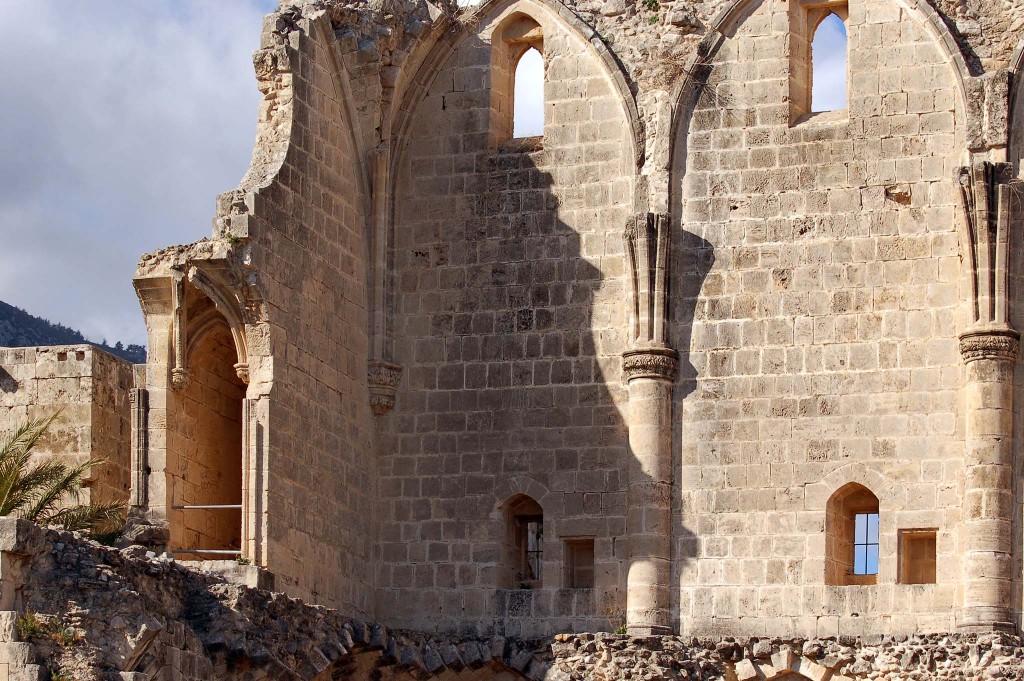 The first monks to settle here were representatives of Augustinian Hermits, who were forced to flee Jerusalem when it was seized by Cairo’s sultan, Saladin Ayyub, in 1187.
The first monks to settle here were representatives of Augustinian Hermits, who were forced to flee Jerusalem when it was seized by Cairo’s sultan, Saladin Ayyub, in 1187.
It is known for a fact that the first building was constructed between 1198 and 1205, while the bulk of the modern complex was built during the reign of French king Hugh III (1267-1284).
In their turn, monastery cells and a refectory were added during the reign of Hugh IV (1324-1359).
After the island was conquered by the Ottomans, monks were evicted from the abbey and the monastery itself was transferred to the Greek Orthodox Church.
Right above the entrance of the abbey is a Gothic tower of incredible beauty, and if you pass under it you will find yourself in a cosy little yard.
The church, which is located at one side of the yard, is part of a complex which is the best preserved of all. Its creation dates back to the 13th century, while the murals, which are preserved on the facade, date back to the 15th century.
The Abbey Inside Through the Eyes of a Modern Tourist
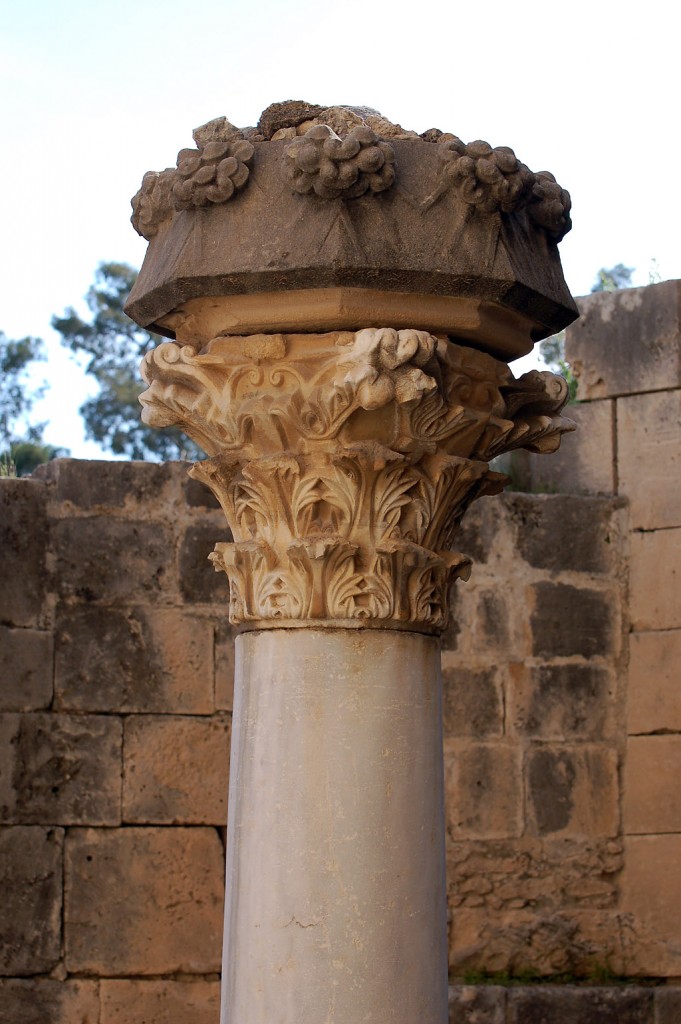 An entrance to the square opens from an inner yard encircled by 18 arcs. Two Roman sarcophaguses, one of which used to be a lavabo (a wash basin for ritual baths), stand under one of the northern arcs.
An entrance to the square opens from an inner yard encircled by 18 arcs. Two Roman sarcophaguses, one of which used to be a lavabo (a wash basin for ritual baths), stand under one of the northern arcs.
A door of a sarcophagus leads to the monks’ refectory. There are coats of arms of the previous royal houses of Cyprus, Jerusalem and the Lusignans on the marble lintel blocks above the door.
Тhe refectory represents a marvelous example of Gothic architecture and may be the most beautiful room in the abbey. There is also a pulpit in the hall from which lectors and preachers addressed the monks whilst they were having their meals. The room is well lit thanks to six windows located on the northern wall and one pink window on the eastern wall.
The door on the western side leads to the kitchen and the cellar, which are located under the refectory.
It is assumed that the rooms between the refectory and the kitchen were used as toilets once.
A deanery and work chambers were located in the eastern part of the inner yard. The administration building, quaintly decorated with a stone composition – a man carrying a double ladder on his shoulders and another man between two mermaids; a reading woman; two animals attacking a man; a woman in a rose garden; a monkey and a cat among the leaves of a pear tree and a man with shield under it and, lastly, a monk in a cloak, used to be located in one of them.
There is some evidence that the column, which is located in the centre of the yard, was brought from an old Byzantine church.
There are monks’ cells above premises on the first floor. You may find an old repository of church valuables nearby on the southern part of the inner yard.
A Rest in a Cafe after the Visit
When you have had enough walking along the abbey, you may have a rest in a café in front of it. It is called a Tree of Idleness and, really, time seems to stop here and you don’t notice how long you have spent enjoying the coolness and the wonderful architecture of the abbey.
The name of the café comes from the name of a homonymous tree of the Robenia species, which is already more than 200 years old. Just imagine: it was under this tree that Lawrence Durrell, the author of the book ‘Bitter Lemons’ devoted to his trip to Cyprus and wrote his masterpiece.
It is surprising, but even in Fеbruary when there are practically no tourists in Cyprus, many guests come here. Some may say it’s because there are only a handful of sights on the northern part of the island, but I think this is not the only reason. The extraordinary history, the ancient architecture which catches your eye, magnificent landscapes and an unusual serenity attract tourists from all over the world here.




